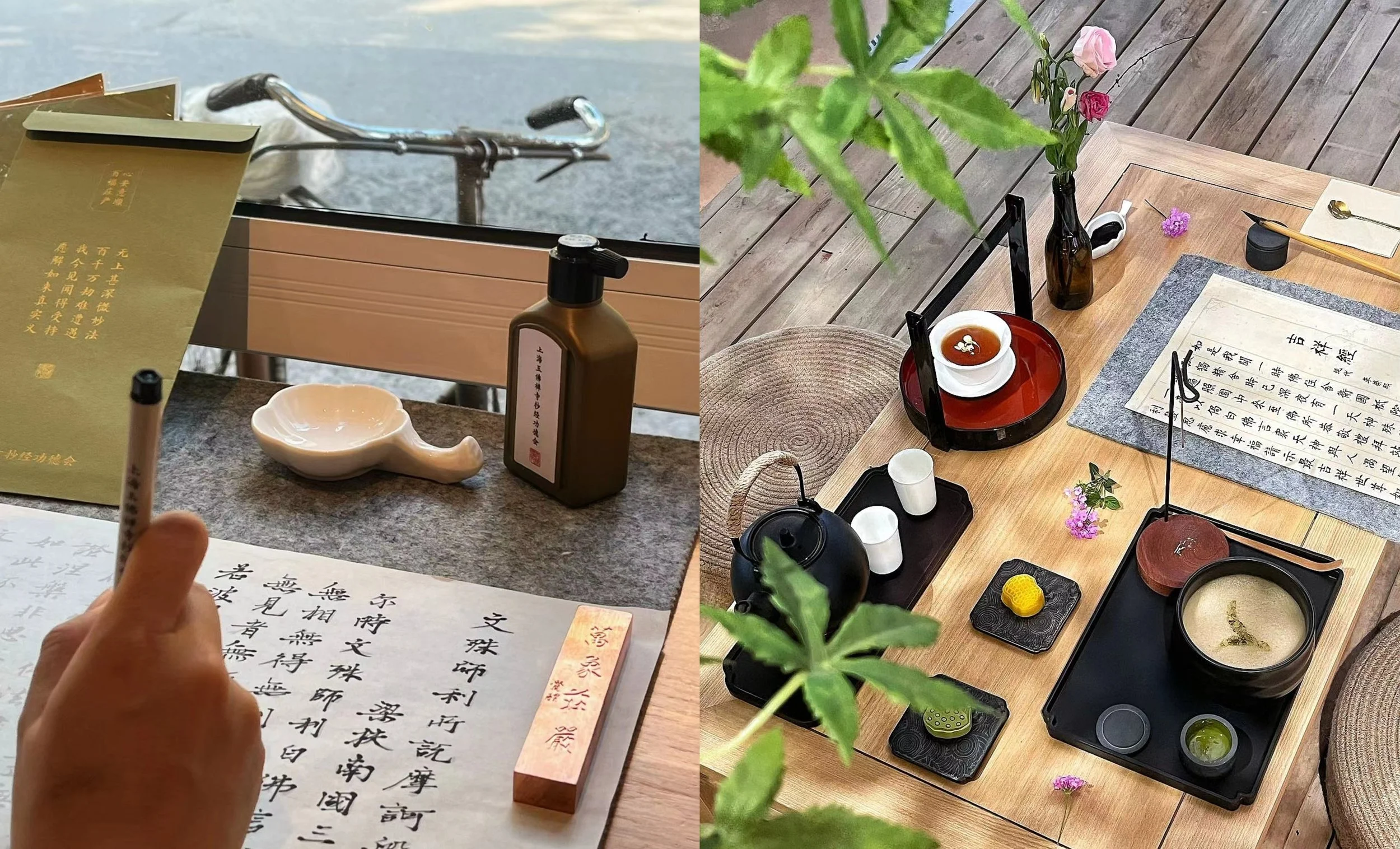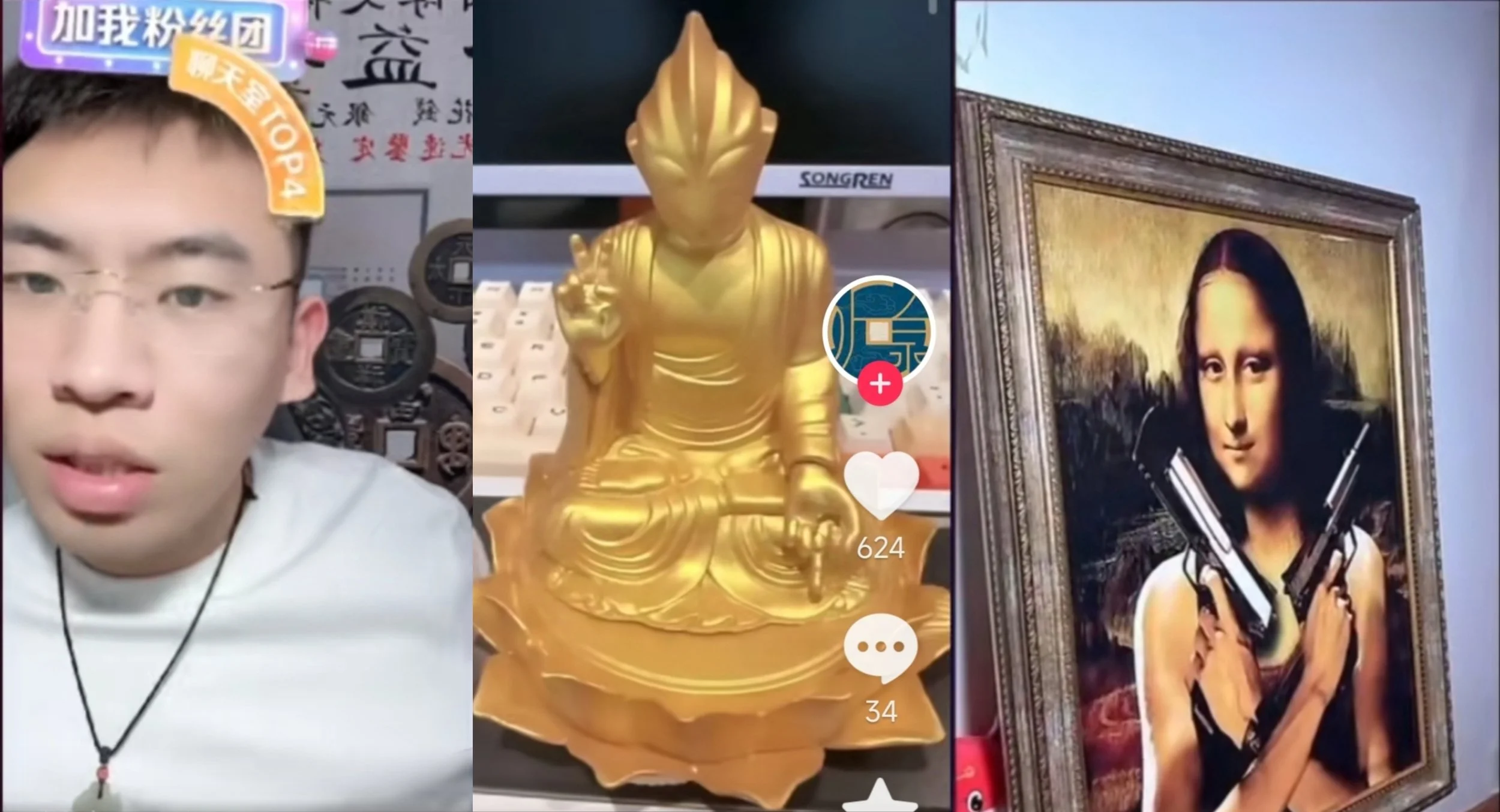Traditional collectibles: the new social currency for Chinese youth
Traditional collectibles - artifacts with investment or collection value - are no longer just for the elderly. Various aesthetic pieces symbolizing good fortune have become social currency among young people, with bracelets being particularly loved by young women. Content like buying guides, symbolism explanations, bracelet styling tips, and store visits resonate deeply with younger audiences. On Xiaohongshu, the hashtag #Traditional Collectible Girls (文玩女孩) has over 2.4 billion views, while on Douyin, the hashtag # Traditional Bracelets (文玩手串) has 12.7 billion views, and #Traditional Collectibles (文玩) has an impressive 33.55 billion views.

RED posts about buying guides, bracelet styling tips, store visits for traditional bracelets. Image: Xiaohongshu @七七饰石久 @十六夏原创手作 @一些小物件~
Chinese youth are buying traditional collectibles not just for decoration or fun but as a form of "spiritual comfort." They hope the symbolic meaning and energy behind these items will help them relieve anxiety and heal in their stressful lives.
New forms of livestreams have fuelled the growth of the collectibles market. Young buyers can now engage with sellers in real-time through e-commerce livestreams to get information and express their preferences. This has allowed businesses to tailor products to fit the tastes of young consumers, with new designs being released as quickly as fast-moving consumer goods like coffee or tea.

Collectible products that fit the tastes of young consumers featuring dopamine-inducing colors, funny shapes and looks, practical design as a phone chain. Images: Xiaohongshu
Collectible appraisal livestreams are gaining popularity due to their entertainment value, while also driving sales. The appeal comes from the excitement of appraising items in a "blind box" style (random video calls with views to appraise their collectibles). These streams often include humorous, whacky modern replicas, like a Mona Lisa holding pistols or Ultraman jade statues, adding a playful touch.

Humorous, whacky modern replicas showing up in a famous collectible appraisal livestreaming channel (@听泉鉴宝, nearly 15.8 million followers on Douyin). Images: Douyin
The investment value of the collectibles market is nearing ¥1 trillion ($140b) according to the Hurun Research Institute, with strong growth continuing. The appraisal industry, closely tied to collectibles, currently boasts over 31,000 companies in China. Over the past five years, this sector has steadily grown, with 2020 marking a record increase of 14,000 new companies—a 285% year-on-year growth rate. Top livestreamers in the collectibles and jewellery domain are also emerging. Public data shows that, in July 2023, three streamers in the jewellery and collectibles niche topped the sales charts, with the top two each generating over ¥500 million ($70m) in monthly sales.
The booming growth of the collectibles market is not only driven by young people’s pursuit of emotional value but also by increased platform support. Douyin has established integrated centres for product inspection, shipping, and warehousing to ensure that each piece of jewellery or precious gemstones sold on its platform is individually inspected. Kuaishou has also partnered with authoritative institutions to launch its “True Treasure Warehouse” service, applying stricter governance in the jewellery and collectible sector with tailored inspection and penalty measures for different merchants.
Elderly influencers provide a counter-narrative to China’s intense work culture, proving that seniors can live life on their own terms, which is proving endearing to young Chinese consumers often labelled as “fragile youth”
A concise yet holistic summary of February 2025’s key marketing developments in China, highlighting valuable insights and their implications for brands.
From its roots in TCM to the playful emergence of Poop Map, China’s evolving attitude toward bowel health demonstrates an openness to blending ancient wisdom with modern tech-savvy trends
The record-breaking triumph of Ne Zha 2 confirms that compelling storytelling, rooted in Chinese culture and reflective of current societal sentiment, can profoundly influence consumer behaviour.
Xianyu has evolved from a second-hand marketplace into a hub for youth culture, side hustles, and digital innovation, offering valuable insights for foreign brands in China
WeChat has been the quiet achiever of China’s online platforms. Despite the hype of Douyin and RED, the value of goods sold on WeChat reportedly doubled last year
Jack Ma launched New Retail with a roar in 2016 starting a scramble for the New Retail crown on both sides of the Pacific. The buzzword has since fizzled out and Alibaba has divested in much of its bricks & mortar retail properties, but the need to rethink retail is more important than ever. Here's why...
A concise summary of last month's key marketing developments in China, highlighting valuable insights and their implications for brands.
After spreading over social media, China’s youth have demonstrated their need for community and adventure en masse causing a stir on their 50km group ride
A softening ad spend market in China reveals some changes in priorities across online platforms and shifts in spending from major categories
China Skinny’s review of key marketing trends and lessons we observed over the month of October 2024.
Moncler invested $28 million in the one-day "The City of Genius" event in Shanghai, blending global vision with local creative culture. For foreign luxury brands, the Chinese market remains unparalleled, and Moncler’s showcase sets a powerful example of how to captivate and inspire younger Chinese consumers.
China is experiencing a shift—or even a dilemma—in its bricks-and-mortar retail landscape. While high-end malls are seeing declines, non-standard commercial spaces are on the rise. Among these, Beijing’s THE BOX Youth Energy Center is redefining the offline retail experience by tapping into the spending power of the younger generation.
Chinese youth embody a rich tapestry of lifestyles and values that defy easy categorization. In a social media world saturated with flashy façades and overly curated personas, many still celebrate authenticity and self-discovery. This creates opportunities for brands to craft fresh, compelling stories that resonate with their desire for genuine connection.
From in-house exhibitions to various brand collaborations, Shanghai Mental Health Center at 600 Wanping South Road is tapping into mental health concerns, helping to reduce stigma around mental health.
As new generations redefine what weddings look like, brands are seizing the moment to connect with young couples seeking authenticity and personalization.
Scripture copying, once a niche activity, is now a rising wellness trend among young people. It is becoming part of the growing "temple economy," expanding from temples to teahouses and beyond.
Traditional collectibles have become a form of social currency among young people. From spiritual comfort to stylish accessories, livestreams and e-commerce have made these pieces more accessible. And people watch appraisal livestreams for whacky collectibles as an entertainment.
Jellycat CAFÉ has taken Shanghai by storm with its limited-time pop-up. Exclusive plush toys and immersive packaging performances highlight Jellycat's unique blend of emotional value and playful creativity.
The wild Yunnan mushroom "Jian Shou Qing" went viral over summer. Despite its toxicity when undercooked, it's become a social media sensation and a trendy ingredient/flavour where the thrill and novelty, rather than taste, drive its popularity.
Zara's pop up in Shanghai's trendy Anfu Lu provides plenty of lessons on marketing and retail for brands in China
A wave of viral videos in China are flipping the script on traditional Chinese-style parenting. Filmed from a child's perspective, these clips turn guilt-inducing phrases back on parents, pushing them to reflect on their parenting approach.
Ye, the artist formerly known as Kanye West, returned to Haikou, China, after 16 years, with fans endeared by Ye's fashion as much as his music. The whole city got behind the concert, ensuring fans had an all-encompassing Ye experience during their visit to the tropical island.
China's media market is more complex and fragmented than ever. It is also unique. Digital accounts for a much larger share of spend compared to western markets, and Douyin is increasingly taking a larger share of that. But not every brand is maximising its Douyin investment
Douyin provides a platform for ordinary people to build small businesses. By creating unconventional and slightly whacky livestreams and videos, they've captivated young audiences and driven significant sales, despite their simple, rough-around-the-edges style.
Academic/Science bars are trending in cities like Beijing and Shanghai, offering a mix of intellectual talks and social relaxation in a laid-back, tipsy atmosphere.
Just like us, pets need to beat the heat during the sweltering summer months. From stylish cooling mats and pads, to ice collars and breezy apparel, a wave of functional and fashionable products has been heating up China's pet supplies market, creating promising seasonal opportunities.
Wukong is a huge deal in China, not just being the first AAA game and record sales and players, but for its wider impacts on consumer behaviour and branding opportunities
Founded in 2019, Tiaohai Village (跳海酒馆) is a community-driven pub brand. Despite having around 30 locations nationwide, it's said to have achieved over ¥100 million ($14m) in revenue in 2023, together with over 200 highly active online alcohol communities. Check it out to learn about what sets Tiaohai apart from other pubs and how it truly connects with Chinese young people emotionally.
On August 20, the game Black Myth: Wukong officially launched. As China’s first 3A title, it has not only taken the Chinese gaming industry, social media, and stock market by storm, but has also gained worldwide attention.






























